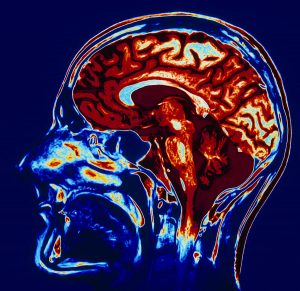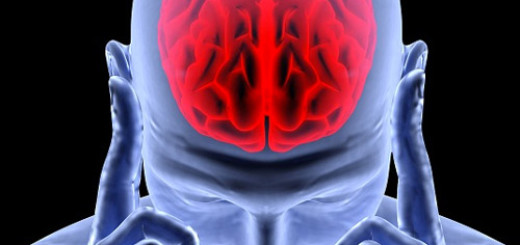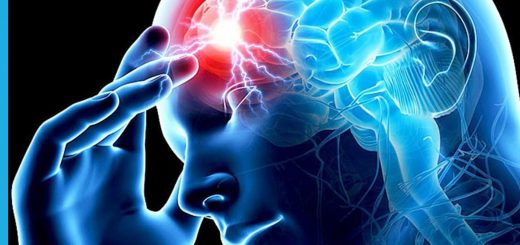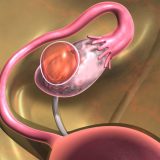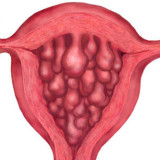Arachnoid is one of the three cerebrospinal meninges. It is located between the hard and soft tire. An arachnoid cyst is an abnormal space filled with fluid and surrounded by tissues. Small Arachnoid cysts usually do not give any symptoms, but larger ones can cause weakness, headaches, drowsiness, and nausea.
A cyst is usually the result of arachnoin duplication or splitting. In most cases, this is a small change without obvious symptoms. An arachnoid cyst is often detected by chance, during computed tomography or magnetic resonance. The disease is most common in children and causes concern to many parents. Epidemiological evidence suggests that it is more common in men than in women.
Features of arachnoid cyst – when do symptoms appear?
The walls of the cyst consist of two web tires. The size of the web cysts can be different. Therefore, the symptoms depend on the size of the cystic formation. Arachtic or spinal arachnoid cysts can occur in clusters, but in 90% of cases they are single lesions. Small cysts show no symptoms, and larger cysts do not cause anxiety. The problem occurs when a cyst reaches a larger size – hallucinations, epileptic seizures, speech disorders and coordination of movements may occur.
Arachnoid cyst – causes
The cause of the formation of arachnoid cyst may be primary or secondary. The main causes are congenital developmental abnormalities in young children. This is usually a defect that includes intracranial accumulation of cerebrospinal fluid in a membrane-like reservoir.
Secondary causes of arachnoid cyst formation include various types of injuries, inflammations, and damage to brain tissue. The disease can also be caused by Marfan syndrome, a hereditary disease of the connective tissue. Arachnoid cyst can occur not only inside the skull, but also in the spinal canal.
The exact mechanism of cyst development is not entirely clear, since three hypotheses refer to it. Consequently, an arachnoid cyst in the head can occur through a one-way valve located between the subspinal space itself and the cyst. The second theory is that cyst cells, similar to the choroid plexus, produce cerebrospinal fluid in the cyst. The third hypothesis is the pressure gradient between the internal environment of the cyst and fluid in the subarachal space. The difference is due to a higher content of protein and sodium in the cyst.
Arachnoid cyst – symptoms
Small arachnoid cysts usually do not give any symptoms and are not treated. A medium sized arachnoid cyst can cause symptoms that are easily ignored and confused with normal fatigue or the onset of infection. Appear weakness, drowsiness, headaches and dizziness, emetic urge. It is dangerous when a cyst begins to grow and becomes large. In humans, behavioral disorders begin, hallucinations, epileptic seizures, and irregular movements occur. People with a large cyst may suffer from sleep apnea, hydrocephalus and balance disorders. There may also be symptoms from the sensory organs – impaired vision, speech and hearing. This last condition is very common when we are dealing with an arachnoid cyst in the back of the skull. A dangerous symptom is also an increase in intracranial pressure.
Treatment
Small-sized arachnoid cyst does not require treatment, but only periodic visual tests that allow you to control its size. Appropriate drugs are used depending on the case. The goal of pharmacological treatment of arachnoid cysts is to turn off symptoms. Such a cyst must also be periodically monitored by visual tests, as it may become larger. Large arachnoid cysts can be dangerous, so they must be removed, often by a working method. One of the methods to remove arachnoid cysts is drainage. This includes breaking the cyst and removing the contents with a special needle. Due to its low invasiveness and effectiveness, the endoscopic method is also popular. In addition, an arachnoid cyst can be removed with a laser.
Watch your health
Any type of cystic formation should be under the strict control of your doctor. In order to timely detect a cyst, you need to regularly undergo examinations of the entire body with the help of x-ray and electromagnetic devices.
If you still have a cyst, then you should not think that it can be completely cured with the help of traditional medicine. Usually herbal medicines and ointments give only a temporary effect, which slightly dulls the pain. Therefore, follow the recommendations of the doctor in the treatment of cystic education. It is not necessary to postpone the operation to remove the cyst. Most often, a gap in a benign formation leads to infection of healthy internal organs and blood!

